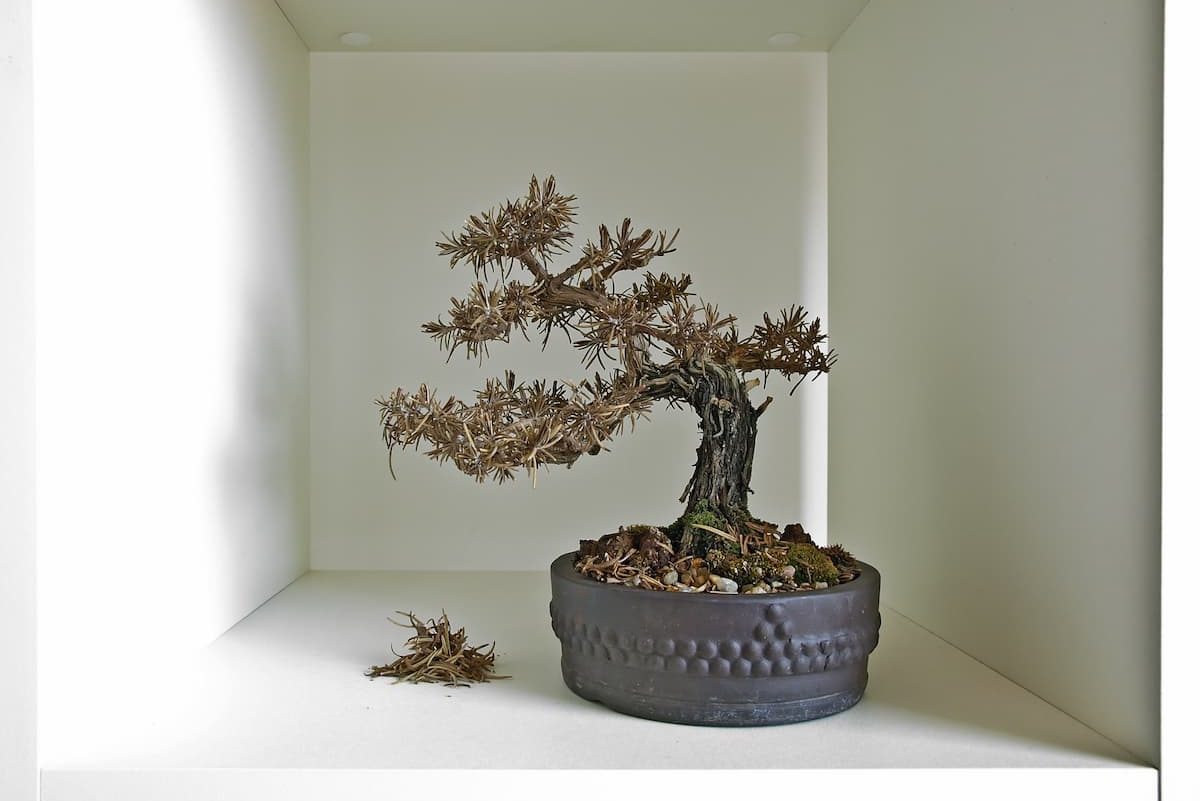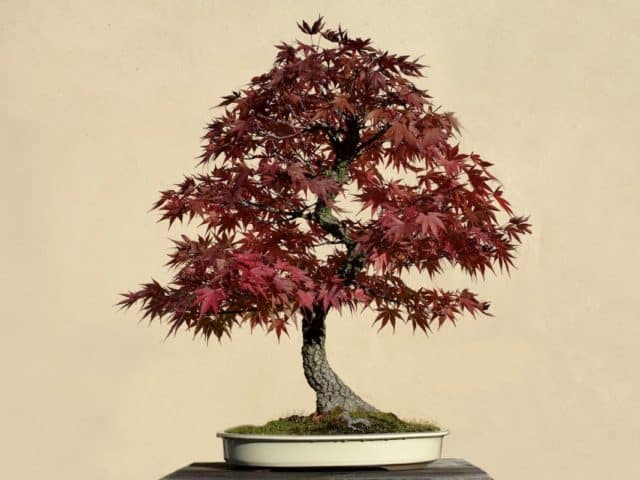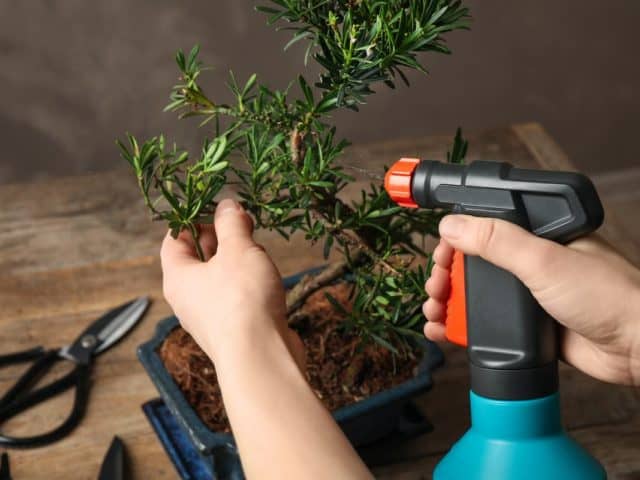Bonsai trees are exceptional, delicate, and in need of constant special care. If you are an amateur Bonsai owner, simple mistakes or neglect can cause your bonsai to die. Which is nothing out of the ordinary for most newbies. In this article, I will inform you of what to do with a dead bonsai tree.
To save your dying bonsai tree, you can re-pot it. Just take it out of its old pot, prune its roots and then move it into new bonsai soil. Place the pot in an area that would get more natural light and water it slightly.
However, these might not be enough details. You have to figure out why your Bonsai is dying in the first place. Then there are specific guidelines that you should follow to help revive your dying plant.
Providing the right care and conditions is essential. It is useful to be mindful of some common beginner’s mistakes too. I have compiled all those information for your benefit.

Checking If Your Bonsai is Dying
If you are an amateur Bonsai owner, simple mistakes like over-fertilizing or under-watering may happen. Doing so can leave your plant looking unhealthy. But do not fret as Bonsai trees are hard to manage even for an experienced gardener.
If you notice something amiss about your Bonsai tree, you should first figure out what is wrong with your plant. Bonsai trees will show signs when it is unhealthy. Some common signs that you should look out for are:
Discoloration
If there is discoloration on the leaves, it can be natural and due to seasonal changes. But if the color changes outside of normal, it might be due to a lack of sunlight, water, or malnutrition.
Overwatering can result in yellow or wilted leaves. Another reason can be receiving too much sunlight. Being exposed to too much sunlight can cause leaf burn for Bonsai plants.
Patterns on leaves and barks
Sometimes you can see odd patterns or red spots on the leaves of barks. It can be a sign of either a disease or from bugs and pests. Before taking any action, it’s important to identify what the problem is first.
Red spots can also be a sign of spider mites, a very dangerous enemy of your dear plant. These insects can devour your Bonsai tree fast. So, it is best to take action as soon as you spot any bug.
Shrunk branches and leaves falling off
This is a sign of the tree weakening and shutting down. This can happen if the tree doesn’t get enough water and nutrition.
In this state, the tree doesn’t have enough energy to maintain itself and its leaves fall off. But sometimes shrunk branches might show due to being infected by diseases.
Brittleness of branches and leaves
Depending on the season and the species of your Bonsai, this sign can be due to natural causes. But if it happens as an unusual occurrence, it can be a sign of not being managed properly.
If the Bonsai is not receiving enough water or sunlight, brittles are a common sign. But it can also be due to using the wrong amount of fertilizer.
Abnormalities in the roots
It is best to examine the plant’s roots every year to keep your Bonsai tree healthy. If you find the plant’s roots discolored, brittle, or broken, this can mean the tree cannot take water and nutrients from the soil properly.
You can also smell the roots to find if it smells weird. The presence of an unusual smell can indicate waterlogged soil. Crushed and compacted root can mean that they have outgrown their pot and needs to be transferred to a larger container.
Revive your Dying Bonsai Tree
Unlike other average plants, Bonsai trees are unique as they can’t survive on their own. If your bonsai looks to be struggling, you might be wondering “can you bring back a dead bonsai tree?”. Good news for you, if you manage to provide just care, it will make a full recovery to a healthier state. So don’t give up and follow the following instructions:
- Step 1: The first step would be to figure out the causes for your Bonsai trees unhealthy state.
- Step 2: Gently, take it out of its pot without harming it.
- Step 3: Untangle the roots and pick away soil from them using chopsticks or hooks. Do this until you the base of the trunk is visible. While working, spray the roots with water to keep them healthy.
- Step 4: Place the tree on a clean or sanitary surface. Then use clean pruning scissors to trim the roots. If you see any sign of discoloration or rotting smell, chop away those diseased parts.
- Step 5: Prepare a new pot for you to place your Bonsai tree. It must be a clean pot in a size appropriate for the Bonsai tree. It’s best to get one slightly larger than the previous one to help the roots grow.
- Step 6: Place sphagnum moss about a third of the depth in the bottom of the pot. This moss prevents diseases and new roots from growing. Place your Bonsai tree in the pot. Then fill it up with a new bonsai soil mix. The mix depends mostly on the type of Bonsai you own. Use chopsticks to push soil into any gaps around the roots.
- Step 7: Prune any infected or diseased part of your Bonsai tree. Make sure to use sterile cutters or pruning shears for this task. It’s also essential to examine thoroughly and remove all diseased parts.
- Step 8: Place the Bonsai in a new spot. The place should be sunny and have enough air circulation.
- Step 9: Water the plant until the soil is completely soaked. Make sure to check if the soil is dry and water the plant regularly.
Common Mistakes You Should Avoid
There are some common beginner mistakes most new bonsai owners agonize over. Treating these mistakes might help your Bonsai thrive in a healthy state. The mistakes you should be aware of are:
Overwatering or under watering
Most bonsai problems are due to watering. It’s important to water your Bonsai tree the right amount. Only water the plant until the soil is completely wet. If there is water coming out of drainage holes, it means the soil is wet and you can stop watering it.
Placing an outdoor tree indoors
It’s crucial to know about your bonsai tree’s nature. An outside bonsai tree can’t survive indoors and the indoor ones can’t suit the inside environment. So before placing your Bonsai tree, figure out its nature.
Insufficient light
Even inside bonsai trees require a lot of light to survive. Choose a place where your tree can get enough natural light. If your home has a south-facing window, that might be just the place.
Wrong size container
A grown Bonsai tree will naturally need a bigger container. For the root systems to grow and stretch properly and take nutrition and water from the soil, the container needs to be the right size. So be mindful of when your Bonsai might need to be upgraded to a bigger pot.
Final Thoughts on What To Do With a Dead Bonsai Tree
Most beginner Bonsai owners go through the stage when their plant will seem unhealthy and almost dying. If you don’t give up and take care of it properly, it just might make a full recovery.
In this article, I have provided all the information on what to do with a dead bonsai tree. All being well, your bonsai tree should revive and thrive without a problem.
Wishing you the best of luck with managing your Bonsai. Thank you for reading the article.






